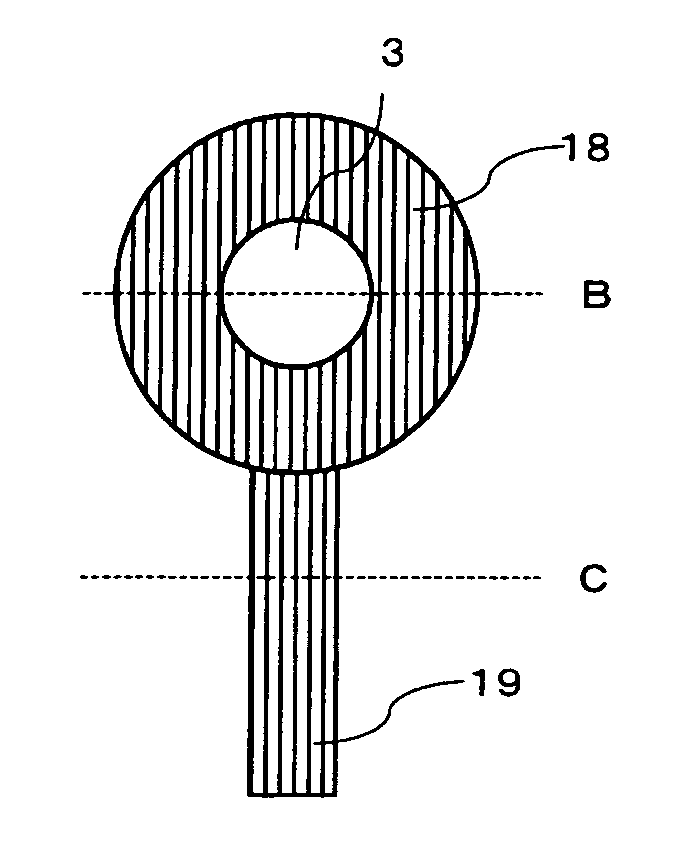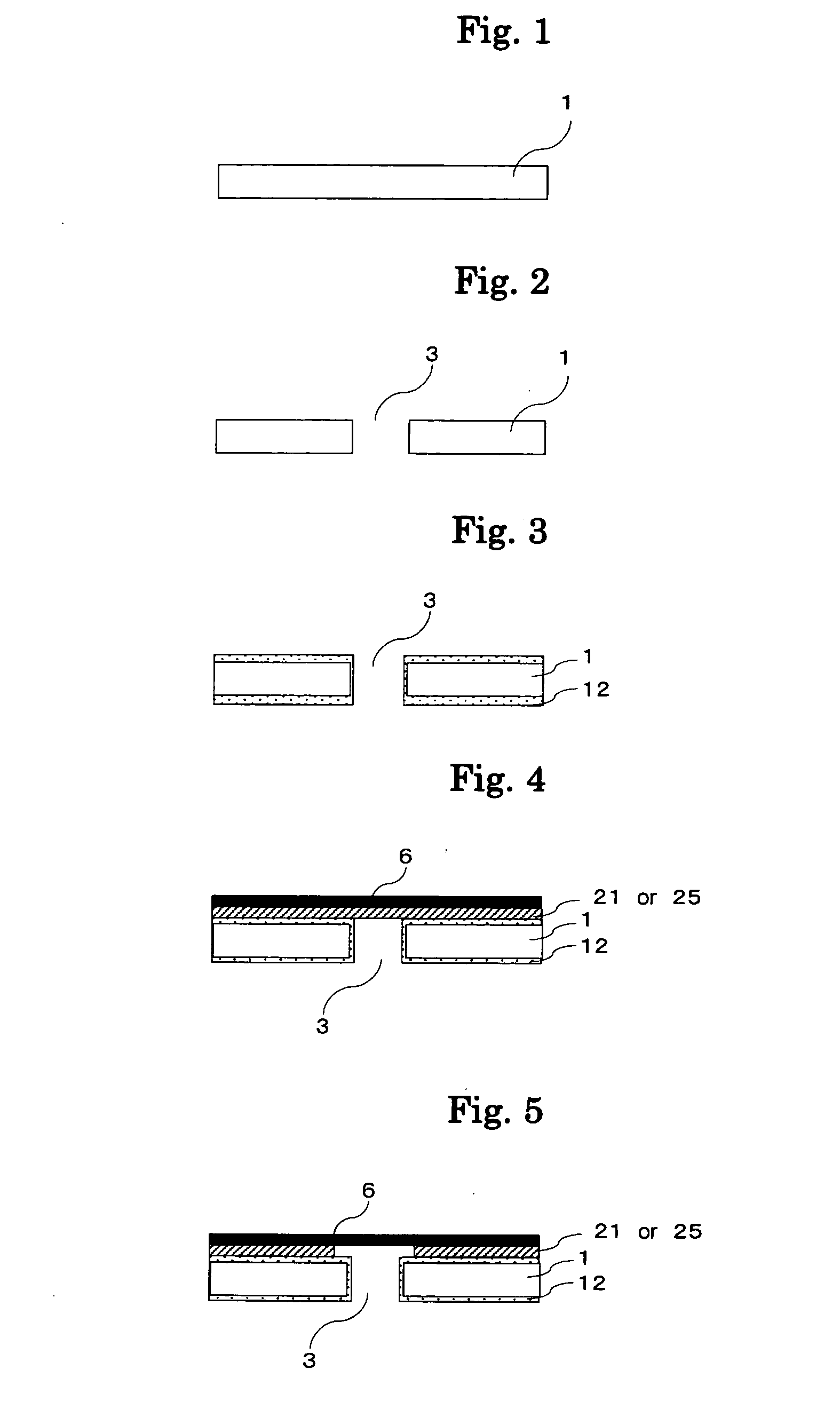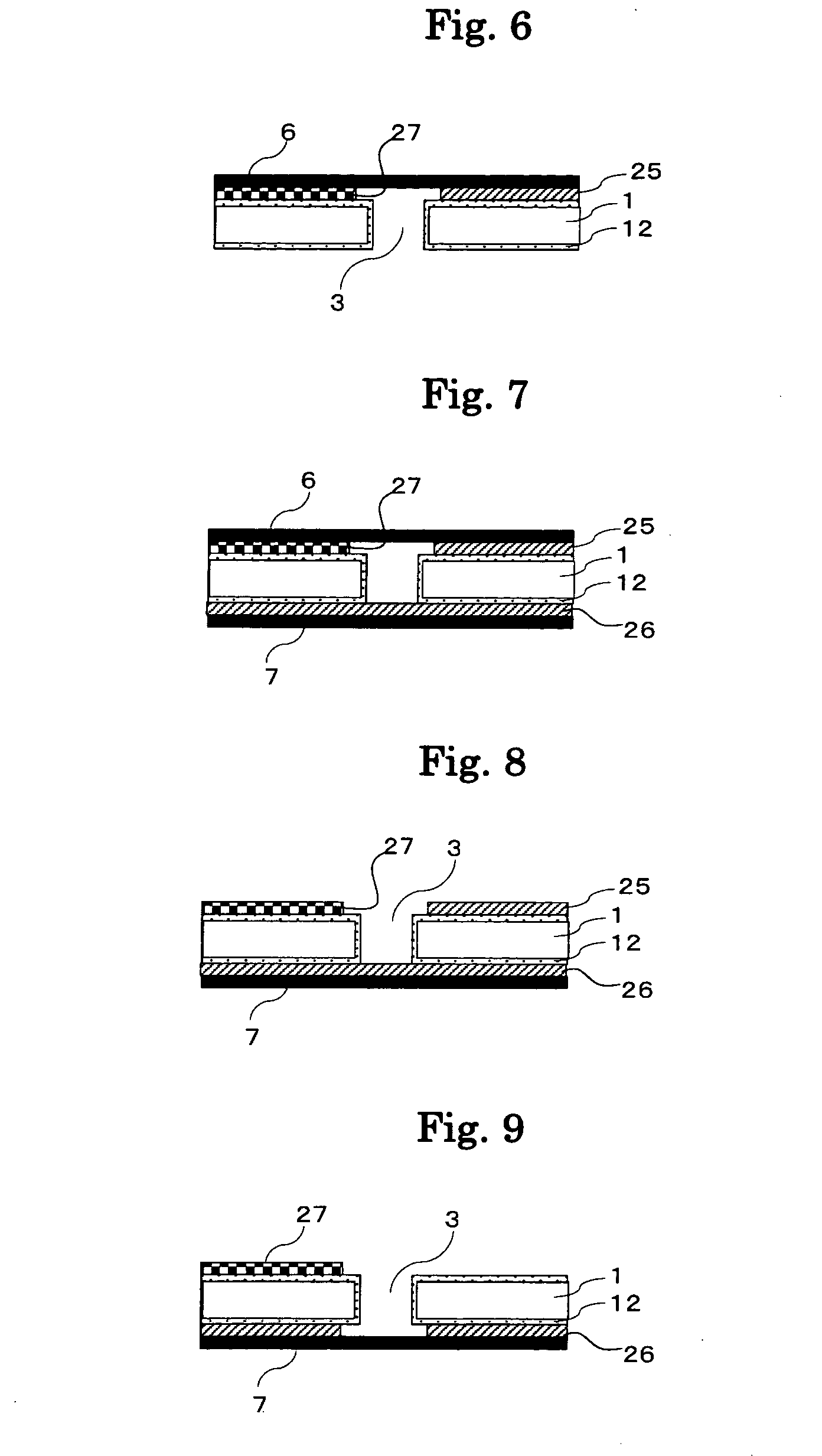Method for Forming Resist Pattern, Method for Producing Circuit Board, and Circuit Board
a technology of resist pattern and resist pattern, which is applied in the direction of resist details, photomechanical equipment, instruments, etc., can solve the problems of difficult to form all wiring patterns, high production cost, and difficult quality management, and achieve accurate forming, stable method of forming, and simplified steps
- Summary
- Abstract
- Description
- Claims
- Application Information
AI Technical Summary
Benefits of technology
Problems solved by technology
Method used
Image
Examples
example 1
[0169]Through-holes having a diameter of 0.1 mm were opened on a glass base epoxy resin substrate (area: 340 mm×510 mm, base thickness: 0.1 mm) using a drilling machine. Then, the substrate was subjected to desmear treatment and then electrolessly plated to provide an electroless copper plating layer having a thickness of about 0.5 μm as a first conductive layer on the surface including the inner wall of the each through-hole. A dry film photoresist for forming a circuit which is composed of a 25 μm photocrosslinkable resin layer and a 12 μm mask layer (support film, material: polyester) was thermocompression bonded to one surface (first surface) of the substrate using a dry film photoresist laminator to provide the photocrosslinkable resin layer and the mask layer (support film).
[0170]Then, a shower spray was applied from a second surface of the substrate at a spray pressure of 0.2 MPa for 32 seconds using a removing solution of a 1 mass % aqueous sodium carbonate solution (30° C.)...
example 2
[0180]A circuit board was prepared in the same manner as in Example 1, except that the time for treatment with a removing solution of a 1 mass % aqueous sodium carbonate solution (30° C.) was shortened to 26 seconds for the first surface and 28 seconds for the second surface when the photocrosslinkable resin layer on the each through-hole and on the periphery of the each through-hole on the first surface and the second surface was dissolved and removed in Example 1.
[0181]The each through-hole and the periphery of the each through-hole immediately before electrolytic copper plating were observed by an optical microscope for the first surface and the second surface, respectively, and it was found that the photocrosslinkable resin layer on the periphery of the each through-hole was removed concentrically with the each through-hole. The each through-hole diameter L1 when the hole was formed was 100 μm, the each through-hole diameter L2 when plated was 99 μm, the diameter L3 of the part ...
example 3
[0184]A circuit board was prepared in the same manner as in Example 1, except that the time for treatment with a removing solution of a 1 mass % aqueous sodium carbonate solution (30° C.) was extended to 50 seconds for both the first surface and the second surface when the photocrosslinkable resin layer on the each through-hole and on the periphery of the each through-hole on the first surface and the second surface was dissolved and removed in Example 1.
[0185]The each through-hole and the periphery of the each through-hole immediately before electrolytic copper plating were observed by an optical microscope for the first surface and the second surface, respectively, and it was found that the photocrosslinkable resin layer on the periphery of the each through-hole was removed concentrically with the each through-hole. The each through-hole diameter L1 when the hole was formed was 100 μm, the each through-hole diameter L2 when plated was 99 μm, the diameter L3 of the part from which ...
PUM
 Login to View More
Login to View More Abstract
Description
Claims
Application Information
 Login to View More
Login to View More - R&D
- Intellectual Property
- Life Sciences
- Materials
- Tech Scout
- Unparalleled Data Quality
- Higher Quality Content
- 60% Fewer Hallucinations
Browse by: Latest US Patents, China's latest patents, Technical Efficacy Thesaurus, Application Domain, Technology Topic, Popular Technical Reports.
© 2025 PatSnap. All rights reserved.Legal|Privacy policy|Modern Slavery Act Transparency Statement|Sitemap|About US| Contact US: help@patsnap.com



